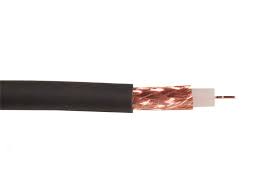Introduction to Leaky Cable
Leaky cable, also known as a leaky feeder cable, plays a crucial role in signal distribution across complex environments. Unlike standard coaxial cables, which are designed to contain and direct radio frequency (RF) signals, leaky cables allow a controlled amount of signal leakage along their length. This feature makes them ideal for underground tunnels, buildings, and large industrial facilities where traditional wireless communication systems may struggle to provide consistent coverage.
The core function of a leaky cable is to act as an extended antenna, emitting and receiving signals throughout its length. This capability ensures seamless communication, even in obstructed areas where conventional antennas might fail. Industries such as mining, transportation, and emergency response rely on leaky cables for uninterrupted communication.
Key Features and Working Principle of Leaky Cable
Leaky feeder cables are designed with small, evenly spaced openings in their shielding. These openings allow controlled signal transmission and reception, creating a distributed antenna system that extends wireless coverage. The key components of a leaky cable include:
- Inner Conductor: Carries the RF signal efficiently.
- Dielectric Insulation: Provides separation between conductors.
- Outer Conductor with Perforations: Facilitates controlled signal leakage.
- Protective Jacket: Ensures durability against environmental factors.
The operation of a leaky feeder system involves a base station or repeater unit, which injects signals into the cable. As the signal propagates along the cable, it radiates through the perforations, covering a wide area. Wireless devices can connect to this distributed signal, ensuring seamless communication without signal dropouts.
Applications of Leaky Feeder Cable
Underground Mining and Tunnels
Leaky cables are indispensable in mining operations where traditional communication networks fail due to structural interference. Workers rely on these cables for two-way radio communication, safety monitoring, and emergency alerts. The consistent signal distribution ensures that miners remain connected, reducing operational risks.
Similarly, tunnels for road and rail transportation require continuous connectivity for security systems, public address announcements, and emergency response communication. Leaky feeder cables provide reliable coverage in these confined spaces, enhancing passenger safety and operational efficiency.
Buildings and Large Industrial Complexes
High-rise buildings, shopping malls, and manufacturing plants often experience signal dead zones due to thick walls and metal structures. Leaky cables solve this issue by ensuring even signal distribution throughout the facility. Firefighters, security personnel, and maintenance teams depend on these systems for effective communication during routine operations and emergencies.
Industrial plants also benefit from leaky feeder systems in automation and machine-to-machine communication. Wireless sensors and control systems connected via leaky cables enhance operational efficiency and productivity.
Public Transport and Metro Systems
Subway systems and metro tunnels require uninterrupted wireless connectivity for train communication, passenger announcements, and emergency alerts. Leaky cables ensure a strong and stable signal across the tunnel network, allowing train operators and control centers to maintain constant communication.
Passengers also benefit from enhanced mobile network coverage, enabling them to use their phones seamlessly while traveling underground. Telecom operators deploy leaky feeder cables to provide consistent coverage across the transit system, improving user experience.
Healthcare and Emergency Services
For emergency responders, leaky cables ensure reliable communication in large buildings, underground parking areas, and disaster sites. A well-established leaky feeder network enhances coordination among teams, improving response times and overall safety.
Choosing the Right Leaky Cable for Your Needs
Selecting the appropriate leaky feeder cable depends on several factors, including frequency range, attenuation, and environmental conditions. Consider the following aspects when choosing a leaky cable:
- Frequency Compatibility: Ensure the cable supports the required frequency band for your application.
- Attenuation Level: Lower attenuation ensures stronger signal propagation over longer distances.
- Durability: Select a cable with a robust protective jacket to withstand harsh environments.
- Installation Flexibility: Opt for cables that offer easy installation and maintenance.
